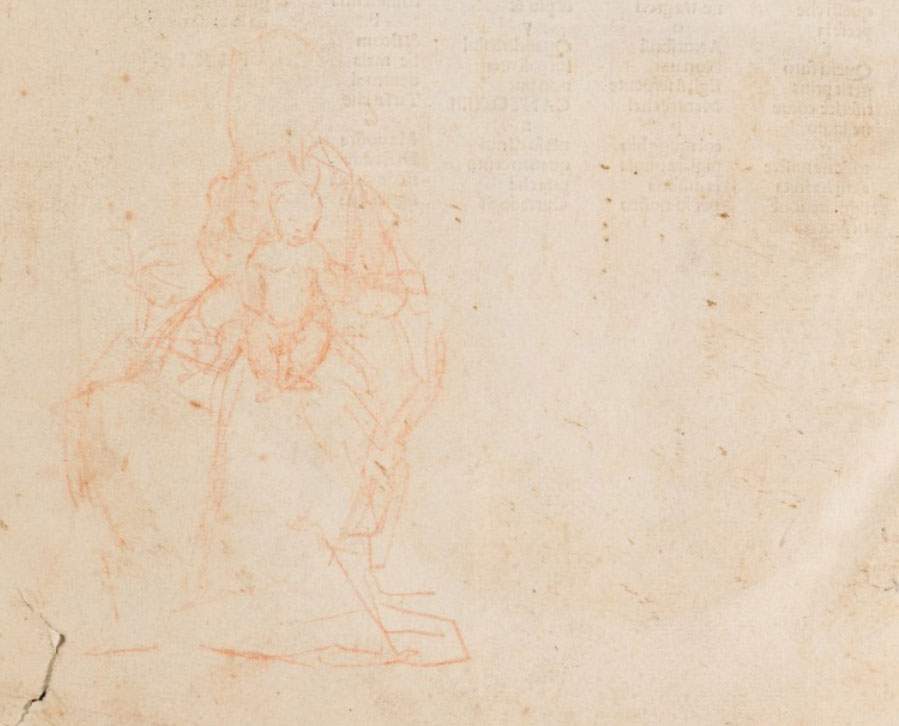A new drawing by Giorgione? The scholar who supports it is in Italy. But caution is needed
At the end of February, the University of Sydney announced to the world the discovery of a new drawing attributable to Giorgione: it is a Madonna and Child featured inside a copy of the Divine Comedy dating from 1497. The drawing appears accompanied by an inscription assigning it to Giorgione, also providing his date of death (September 17, 1510, at the age of thirty-six). It was librarian Kim Wilson who had discovered the drawing, and the discovery was endorsed by Professor Jaynie Anderson of the University of Melbourne, a scholar of Venetian art who ranks among the foremost experts on Giorgione’s art (she is the author of the 1997 monograph Giorgione: The painter of Poetic Brevity, one of the most important on the artist).
Now the debate moves to Italy. In Castelfranco Veneto, the great artist’s hometown, a series of conferences, provocatively titled Giorgione is back, is starting, calling together some of the most distinguished scholars of Veneto art between May and June. And tomorrow, May 3, it will begin precisely with a lecture given by Jaynie Anderson, who, after the announcement and publication of a scholarly article on the subject in the prestigious scientific journal The Burlington Magazine, will present his theories to the Italian public. The lecture is entitled Giorgione Reader of Dante. The Sydney Incunabulum and will also feature Reinhold Christopher Mueller who, after a doctorate from Johns Hopkins University in Baltimore and teaching at the University of Arizona, now teaches medieval history at the University of Venice and is a profound connoisseur of the Renaissance world.
There are three appointments in all, all, like the one with Jaynie Anderson, organized at the Casa Giorgione Museum (always at 6 p.m., free admission with reservations required, info at www.museocasagiorgione.it): the next one will be held on May 31, when art historian Enrico Maria Dal Pozzolo, a great expert on Giorgione (he curated the important exhibition on the artist organized in 2010 in Castelfranco Veneto), and Massimiliano Bassetti professor of Latin paleography, both from the University of Verona, will address the first written traces on Giorgione’s life and activity, with particular reference to three inscriptions.
Dal Pozzolo himself was among the first scholars to comment on the discovery. Speaking in late March in the columns of La Tribuna di Treviso, the scholar acknowledged the extraordinariness of the Australian report, but he also pointed out the “uncertain points of the discovery”: namely, it is not known when the Divine Comedy entered the library of the Australian university, the inscription does not seem to have been written by the hand of a Venetian, and, Dal Pozzolo argued, reporting an opinion by Massimiliano Bassetti, the writing presents eccentric executive characteristics, such as to suggest “a certain extraneousness of the person who wrote it with the graphic model adopted.” In short: there are several reasons to doubt, and should these doubts be confirmed by other experts in paleography, Dal Pozzolo explained, “we would also have to approach the question from another side, not considered by the scholars who signed the article: namely, that which contemplates the possibility that the inscription and design are not original.” Therefore, extreme caution is needed, but for now every avenue can be said to be open.
The last meeting will be held on June 21: Salvatore Settis, former director of the Scuola Normale Superiore in Pisa and now president of the Scientific Council of the Louvre, and Sergio Alcamo, a scholar of medieval and modern art history, will focus on Giorgione’s most famous masterpiece with a lecture entitled The Tempest and Salvation. The meeting will be a discussion between the author of the book The Hidden Truth and Professor Settis, who has formulated one of the most famous interpretations of Giorgione’s ambiguous painting.
Pictured: the Madonna and Child discovered in Australia.
.
 |
| A new drawing by Giorgione? The scholar who supports it is in Italy. But caution is needed |
Warning: the translation into English of the original Italian article was created using automatic tools. We undertake to review all articles, but we do not guarantee the total absence of inaccuracies in the translation due to the program. You can find the original by clicking on the ITA button. If you find any mistake,please contact us.




























